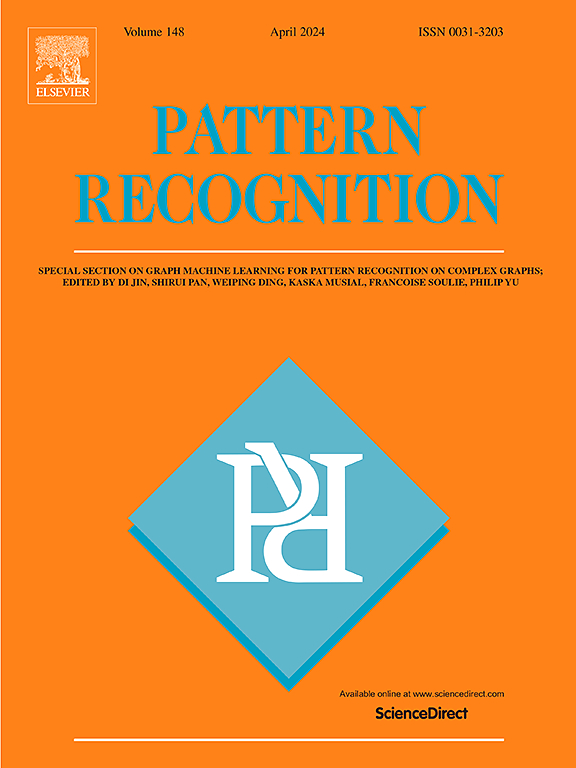鲁棒面部表情识别,同时处理硬和错误标记的样本
IF 7.6
1区 计算机科学
Q1 COMPUTER SCIENCE, ARTIFICIAL INTELLIGENCE
引用次数: 0
摘要
面部表情识别(FER)是一项具有挑战性的任务,特别是当训练数据包含大量错误标记样本和硬样本时。通常,FER模型要么过拟合错误标记的样本,要么欠拟合硬样本,导致性能下降。然而,大多数现有方法无法同时解决这两个问题。为了克服这一限制,本文引入了一种新的FER方法,称为无噪声鲁棒图(NHG),它动态地监督图卷积网络中邻接矩阵的更新,在抑制噪声标签的影响和鼓励从硬样本中学习之间取得平衡。首先,我们将高维面部表情特征映射到低维流形上,初始化样本之间的拓扑关系,从而更准确地测量硬样本关系。其次,我们设计了一个标签一致性掩码(LCM)策略来保留硬样本学习的潜在连接。LCM还可能在存在噪声标签的情况下保持正确的连接,从而支持抗噪声学习。第三,基于错误标记样本和硬样本之间的l2范数变化趋势的差异,l2范数正则化(L2R)抑制了错误标记样本的学习,同时保留了硬样本的学习潜力,抑制了其特征在图内的传播。实验结果表明,与最先进的方法相比,我们的方法在带有噪声标签和硬样本的情况下取得了具有竞争力的性能。本文章由计算机程序翻译,如有差异,请以英文原文为准。
Robust facial expression recognition by simultaneously addressing hard and mislabeled samples
Facial Expression Recognition (FER) in the wild is a challenging task, especially when training data contains numerous mislabeled samples and hard samples. Typically, FER models either overfit to the mislabeled samples or underfit to the hard samples, resulting in degraded performance. However, most existing methods fail to address both issues simultaneously. To overcome this limitation, this paper introduces a novel FER method called Noise-Hard robust Graph (NHG), which dynamically supervises the updating of the adjacency matrix in the Graph Convolutional Networks, striking a balance between suppressing the impacts of noisy labels and encouraging learning from hard samples. First, we map high-dimensional facial expression features onto low-dimensional manifolds to initialize the topological relationships between the samples, thus measuring the hard sample relationships more accurately. Second, we design a Label Consistency Mask (LCM) strategy to retain potential connections for hard sample learning. LCM could also potentially preserve correct connections while noisy labels exist, supporting noise-robust learning. Third, based on differences in trends of -norm variation between mislabeled samples and hard samples, the -norm regularization (L2R) suppresses the learning of mislabeled samples while preserving the learning potential of hard samples and suppressing the propagation of their features within the graph. Experimental results demonstrate that our method achieves competitive performance compared to state-of-the-art methods in scenarios with noisy labels and hard samples.
求助全文
通过发布文献求助,成功后即可免费获取论文全文。
去求助
来源期刊

Pattern Recognition
工程技术-工程:电子与电气
CiteScore
14.40
自引率
16.20%
发文量
683
审稿时长
5.6 months
期刊介绍:
The field of Pattern Recognition is both mature and rapidly evolving, playing a crucial role in various related fields such as computer vision, image processing, text analysis, and neural networks. It closely intersects with machine learning and is being applied in emerging areas like biometrics, bioinformatics, multimedia data analysis, and data science. The journal Pattern Recognition, established half a century ago during the early days of computer science, has since grown significantly in scope and influence.
 求助内容:
求助内容: 应助结果提醒方式:
应助结果提醒方式:


